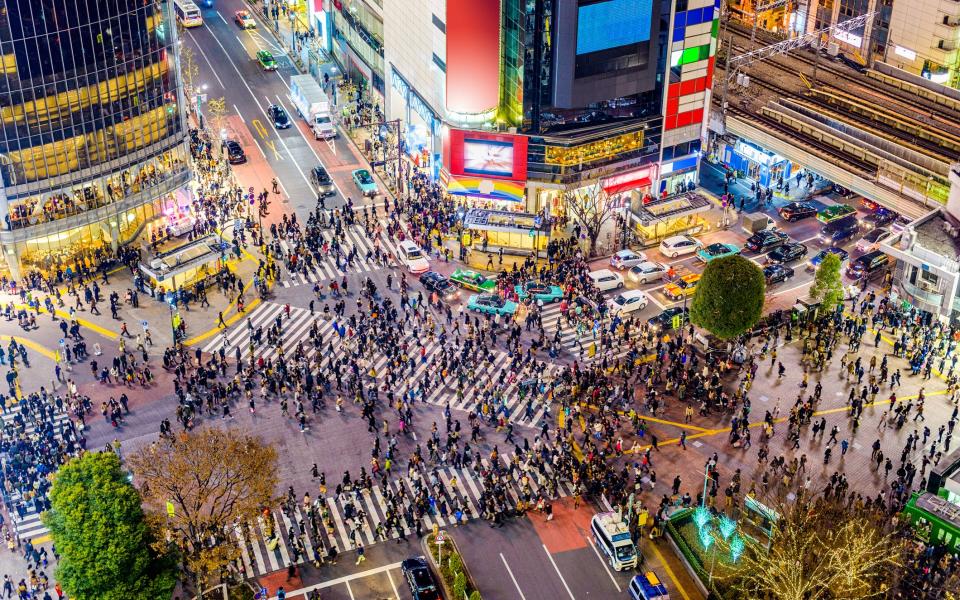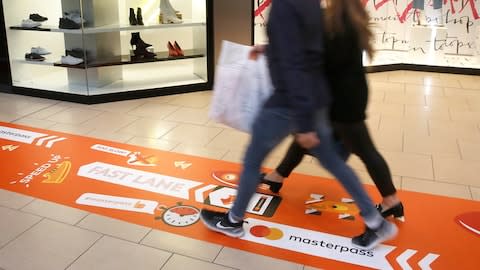An open letter to dawdling tourists – and a call for pedestrian fast lanes

You’re late, in a screaming rush, tearing down the street in a state of panic. Every single second counts towards the increasingly severity of your lateness. Nothing is quite so infuriating in this instance as to abruptly find yourself stuck behind a slow walker. Worse - a gaggle of them.
It brings with it a special sort of frothy rage that few other trivial inconveniences can match. That passenger on the Tube who's hogging the entire pole on a packed train? Annoying. That teenager who just swung around and bashed you with their backpack? Worthy of an eye roll. But hardly hop-up-and-down-like-a-cartoon-troll levels of rage.
It's enough, even, to make some Britons temporarily suspend their suffer-in-silence policy and initiate contact with a stranger in order to get past. There's an entire Facebook group dedicated to this vexation, I secretly want to punch slow walking people in the back of their heads, with more than 7.8k fans.
Upon reflection, it’s a bit unfair. To hug a pole when others need to hold it is plainly rude - far worse than the mere act of strolling at a leisurely pace. But somehow, when you're late and trapped behind a slow-ambling human wall, their snail pace feels unforgivable.
There are certain categories when it comes to the slow walker - among them the window shopper, the phone starer, and worst of all, the sudden stopper - but there's one class of pedestrian that is almost guaranteed to get in your way: tourists.

Even those who wouldn't dream of faffing around on a busy pavement during rush hour back home have a tendency to drift into slow walking terrority when in holiday mode. It's possibly the single most annoying thing about tourists anywhere.
So, a solution?
It's long been my belief that city centres should have pavements with two lanes for pedestrians, much in the same way as swimming pools: one slow lane, one fast lane.
There are plenty of reasons why one might make use of the slow lane - you're on holiday, taking in the sights, lost, looking for something, tired, holding hands with someone, ferrying children - all perfectly valid.
But why should a valid, non-selfish act have to negatively impact others? It shouldn't. It's unnecessary. It's bad science. And there's a reasonably straightforward solution: form two lines. It works on escalators, and on moving walkways at airports - everybody, upon stepping onto one, must make a choice - stand on the right, or walk on the left. It’s almost foolproof. We put a man on the moon. Surely we can herd pedestrians into two lanes.
Some disagree. I asked Dr Rachel Lee, Policy and Research Coordinator for Living Streets, which bills itself as “a charity for everyday walking”, what she makes of my proposal.
“A legacy of adapting our towns and cities to the car is that it has stolen space away from people walking. It's left us less healthy, our roads congested, our air polluted and our cities less well-off," she says.
“Instead of entertaining fads like slow and fast walking lanes, we should be reallocating road space to people walking. Wider pavements give people the room they need to move around each other easily, at whatever speed works for them.”
Unperturbed in the face of my entirely serious plan being branded an “entertaining fad”, I turned to my colleagues on the Travel desk for their opinion. Most deemed it unlikely to work.
“Pedestrians wouldn't respect those lanes in the way they don't respect bike lanes,” Rachel Cranshaw grumbled.
“People would be too busy looking at their mobiles to pay any attention to slow versus fast lanes,” remarked Oliver Smith, adding: “How about pavement police to taser dawdlers?”
I did have one campaign supporter. “Slow walkers are, without exception, the spawn of Lucifer,” Greg Dickinson concurred, adding with regards to sudden-stoppers: “pedestrians should stop just as drivers do - check your mirrors and pull in somewhere”. And as for two lanes? “Bring on the fast lane,” he says. “Particularly in the Underground - why would you not rush through the Underground?”
I maintain my position, and I’m not alone
Concepts that involve the division of pedestrian walkways have already been trialled in Europe, the US and China. Let’s start with the UK.

One of the very first instances in Britain was prompted by a 10-year-old girl from Sheffield, who wrote a letter to the Meadowhall Shopping Centre in 2014.
“I am incredibly disappointed by people walking around your shopping centre,” the young Chloe Nash-Lowe railed. “It annoys me so bad I want to scream.
“You should stop people walking slow as people are in a rush for work and this could cause people being late.”
The shopping centre responded by installing two lanes, albeit temporary, as Chloe suggested. More as a PR stunt than a change in policy, but stay with me.
Liverpool got itself a fast lane in 2015, again temporary, at the Liverpool One shopping centre. A poll following the trial revealed that it was much more popular with those aged between 16 and 24 (69 per cent approved) than over-55s (37 per cent). In 2016, a fast line briefly appeared outside London's Waterloo station.
Then, last year, Mastercard conducted a survey on 2,000 shoppers at the Lakeside Centre in Essex which found that slow walking was a grievance for 84 per cent of them. With that, they too marked a fast lane at the centre - the outcome of which went unreported.
In Germany, 2015, segregating lines were painted onto the streets of Antwerp specifically aimed at phone-starers, marked “text walking line”. The same year, a university in Utah created three lanes for students: “walk”, “run” and “text”.
Speedy walkers rejoice! Direct Line set up 'Pedestrian Fast Lane' outside Waterloo Station https://t.co/Sjc8SG1J3Apic.twitter.com/9H4hrd0Zqg
— ITN Productions News (@ITNPNews) 23 September 2016
Similarly in China, there's a 100ft stretch of pavement dedicated to phone starers at a theme park in Chongqing called 'Foreigner Street’. Upon installation, officials were quoted as saying the markings were intended to remind people that “it is best not to play with your phone while walking.”
And earlier this year, another city in China followed suit and brought in a near-identical system along Yanta Road in Xi'an, close to a major shopping centre.
While all of these experiments have thus far remained just that, it gives me hope for the future of crowd control. Pre-20th century, when cars were still few and far between, road markings weren’t necessary. But inevitably over time, traffic built to the point where lanes and lights and box junctions became essential in bringing order to the chaos.
Comparably, the concept of pedestrians in Venice before the explosion of overtourism would have been preposterous. Today, in a city where tourists during the high season outnumber locals two to one, all sorts of measures are rightly being introduced to address the madness.
Tourism is only growing, as is the population of the world at large, and there’s little we can do (lest we get seriously draconian) to stop it. At least, for crying out loud, divide the dawdlers from the people with somewhere to be.
You may have voted. Now vent. Leave your comments in the box below.

